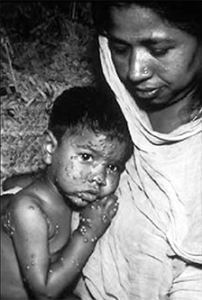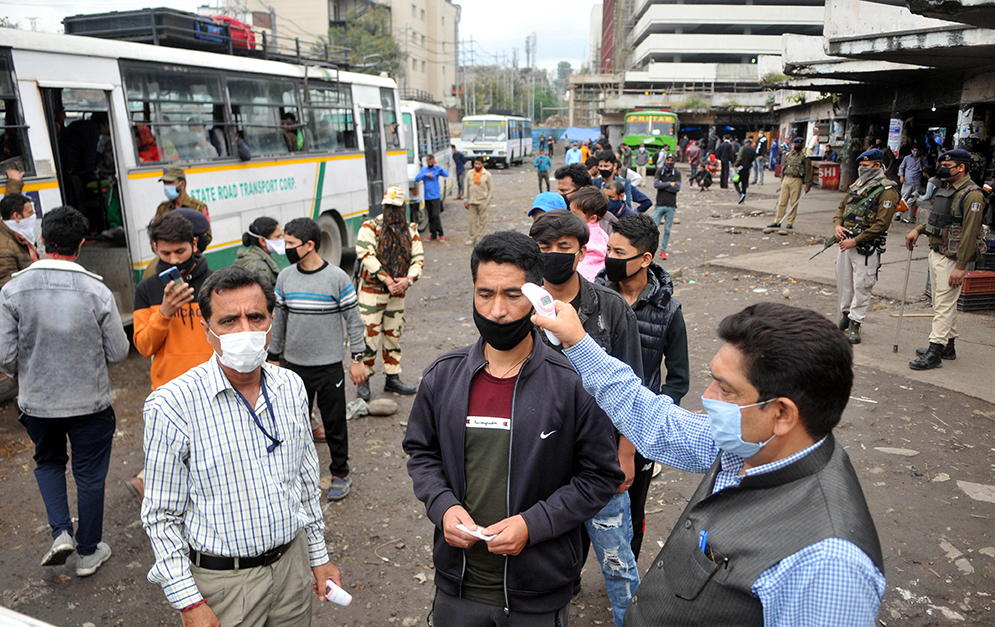Patriot looks into the National Archives to check how India dealt with a similar pandemic, the smallpox, in the 1970s and successfully managed to eradicate it
The active number of coronavirus affected cases in India currently stands at 693, with 12 people succumbing to it in the process (as of March 26). If we talk about global numbers, more than 4,00,000 people have been affected with death toll touching 21,000.
The world is under lockdown — people are isolated at their homes. Everyone is searching for a way to counter this deadly pandemic. In this time, World Health Organization’s (WHO) executive director Michael J Ryan in a press conference said that the fight against the worldwide pandemic lies in the hands of how India deals with it.
He said that India played an important role in defeating epidemics like smallpox before, so our fight against the Coronavirus is something that the WHO looks forward to.
This is definitely not the first time that the whole nation came face to face with such a pandemic.
Patriot looks into the records available at the National Archives to find out how we dealt with the smallpox pandemic in the past.
In the early 1960s, India accounted for nearly 60% of the reported smallpox cases in the world. Because of the stigma and social isolation associated with the disease, numerous cases went unreported. Of greater concern was that particular strain of smallpox found in India was far more deadly than the strains found in West Africa.
In response to the situation, in 1962, the government of India launched the National Smallpox Eradication Programme (NSEP) with a focus on mass vaccination of the population. It poured money into the vaccine manufacturing industry and hired healthcare workers to perform inoculations.By 1966 approximatively 60 million primary vaccinations and 440 million re-vaccinations were performed. However, by 1967, it was clear to everyone that the campaign was unsuccessful; the number of smallpox cases in India was increasing.

In September 1970, on the basis of recommendations of an assessment team, a Plan of Operation was signed by the Government of India and the WHO. The following year, four WHO medical officers arrived in India in 1971 to spearhead the revised eradication campaign.
Until then, mass vaccination was considered the only way to get rid of the smallpox pandemic.Prior to 1969, the standard method of smallpox vaccination was to place a drop of vaccine on the patient’s arm and press it into the skin with a single-point needle. This process was repeated five times for a primary vaccination and fifteen times for a revaccination. Much of the vaccine was wasted and it was difficult for workers to perform correctly.
The introduction of a multiple puncture technique, utilising a bifurcated needle, had immediate positive consequences. The bifurcated needle was a cheaper and easier method of delivery. Healthcare workers needed minimal training. It was also less painful and less traumatic for the patients.
Aside from vaccine quality and the use of bifurcated needles, India had another barrier to successful mass vaccination. In most countries, vaccinating 80% of the population over a five-year period was considered sufficient to interrupt smallpox transmission.
However, in densely populated countries such as India, the large number of births every year (25 million) made this target impractical. Mass vaccination could only reduce the incidence of smallpox, it couldn’t contain it. A new strategy was needed to augment the vaccination efforts: the “surveillance-containment” search.
Teams of healthcare workers would actively seek out all potential cases of smallpox as quickly as possible. The affected individuals and their families or neighbours would be immediately isolated and vaccinated to prevent the further transmission of smallpox.
This emphasis on active searches and detection and the containment of outbreaks was essential to eliminate infection. This method is something that the current government can apply to locate each and every person and their families affected by the Coronavirus and isolate them till they get better.
The Government of India threw its full weight behind the National Smallpox Eradication Programme. In urban areas, a carefully organised massive publicity campaign was an essential component, several days in advance of WHO team’s visit.
Posters were created in native languages which encouraged vaccinations, especially of young children. Even Prime Minister Indira Gandhi was involved in the marketing effort. She sent announcements to several Indian states exhorting their citizens to cooperate with the programme.
Perhaps the most unusual publicity method was the reward of Rs 100 rupees for the report of any fresh smallpox case. The reward was gradually increased as the incidence of smallpox declined. It was highly effective. 11% of smallpox outbreaks were reported by the general public in 1975, compared with only 2.6% in 1973.
The rewards were widely publicised using loudspeakers, radio and television announcements, posters, newspaper advertisements, and writing on public walls. However, word of mouth communication continued to remain the most effective means to find new cases.
A similar approach to the Coronavirus outbreak can mean more people coming out in the open and more cases being identified.
In May 1975, the very last case of smallpox was found in India. For the next two years, searches and active surveillance were continued to ensure there were no hidden smallpox pockets. In 1975 the last reported smallpox case was found and in 1977 WHO declared the disease extinct from the face of this earth.
From its peak at 11,000 cases per week to nil cases in the matter of one year (1974-75) at a time when medical facilities were not the best in the country, proves that with able leadership and adequate planning, the Coronavirus too at this day and age can be contained.
So the nation can hope that like the smallpox outbreak, Coronavirus pandemic too will be contained and our country may play a major role in it.





